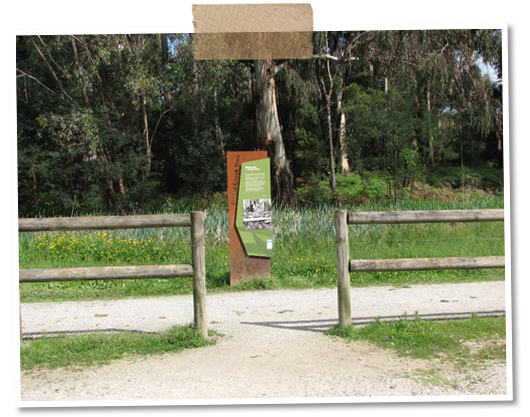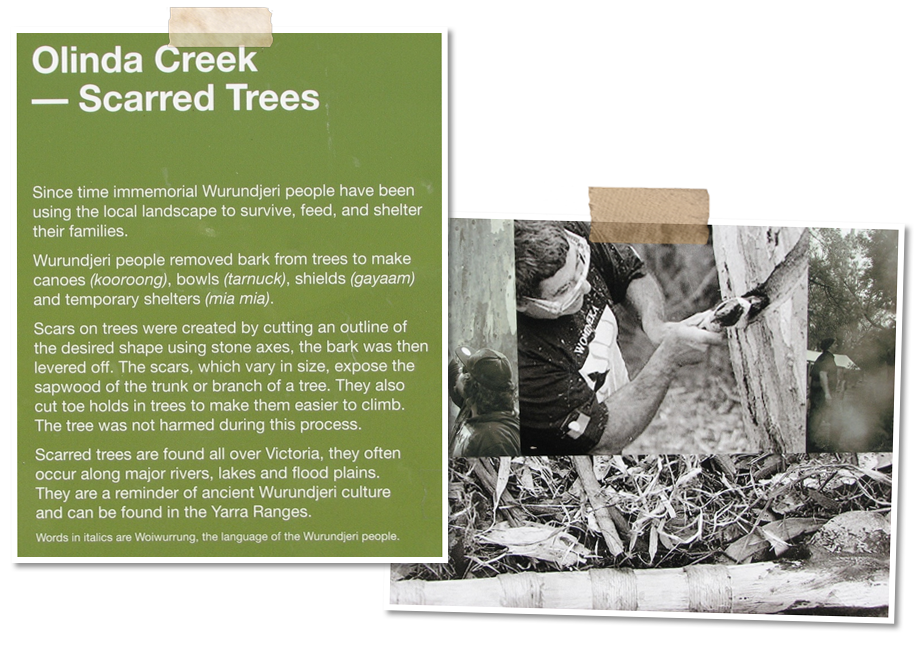We know too little about the first people to live in the Dandenong Ranges and the Yarra Valley. In one way this is a function of what 'history' is – by definition history begins with formal records at the time European people conquered Australia. Prior to that we call our knowledge 'pre-history' or 'archaeology'. But the first Australians were here, and they had triumphs and losses just as real as those recorded in the last two and a half centuries.
We have no knowledge of how long people have been living in what is now Mt Evelyn, but evidence of human activity at Keilor, northwest of Melbourne, has been dated to 31,000 years Before Present (BP).1 Pioneering Tasmanians must have moved through Victoria on their way south, and their presence has been recorded in caves in Tasmania's southwest from 35,000 years BP.2 The evidence suggests that Aboriginal people have been living in Victoria for at least 30,000 to 40,000 years. For the period prior to European arrival, our records are oral (story and song), dance, practical traditions passed down through generations, and artefacts. Now carbon and other dating techniques, and DNA analysis, are improving our understanding.
The following oral memory, as told by Billi-billeri of the Woi wurrung people, contains several geological assertions.3
'Once the water of the Yarra was locked in the mountains. … This great expanse of water … was so large that the Woi wurrung [tribe] had little hunting ground. This was in contrast with the Watha wurrungs and the Boon wurrungs, whose hunting ground was the lovely flat which is now Port Phillip Bay … .
[Two Woi wurrung men] resolved to free the land. [Together, chopping with stone axes], at last they reached Port Phillip. The waters of Moorool and Morang rushed out. The country of the Woi wurrung was freed from water, but Port Phillip was inundated.'
Marriot notes, '[This legend reflects] considerable understanding of the evolution of the river. … . Within the last one million years, the Yarra has had to cut a deep gorge between the Merri and Darebin Creeks; a large lake did exist up stream from Templestowe; and, until only 5200 years ago, Port Phillip was a lush, open plain.'4
Dr Guy Holdgate found that 'climate change has resulted in Port Phillip periodically becoming a dry plain within the last 10,000 years, and most crucially from the point of assessing Aboriginal evidence, Port Phillip was dry from around 1000 BP to around 3500 BP'.5
Within the Woi wurrung language group there were four to six clans or patrilineal land-owning groups. Of these, the Wurundjeri balluk clan comprised two adjacent patrilines or lineages. One patriline was the Wurundjeri willam, who lived in the northern Dandenongs and Upper Yarra, including the Mount Evelyn area.6
At Billygoat Hill (in the Fernhill Road/ Russell Street area) in the 1860s, Clement Deschamps' vine-stick cutters enjoyed friendly interaction with the Wurundjeri. Joseph Varty met Aboriginal people in the Inverness Road area when timber-getting, and Nurse Joy remembered Aboriginal groups camping beside Olinda Creek at the site of the Mt Evelyn Reserve, both probably in the early 1900s. Aboriginal tools have been discovered on the creek flats between Olinda Creek and Swansea Road. The creek was called Ngurt-bille-worrun in the Woi wurrung language. McGivern translates the name as 'hunting the duck along the stream which comes round the belly of the mountain'.7
A shield tree still stands on the creek flats. There were two other trees whose authenticity cannot be conclusively proved or disproved on present information. A large hollow eucalypt in the Owl Land Reserve above the Warburton Trail was thought to be a Wurundjeri storage tree. A manna gum beside the Horseshoe Falls in Quinn Reserve had a sheet of bark removed, as if for a canoe or shelter. One of the burls from the trunk had also been removed, possibly for carving a tarnook (food bowl). Both of these trees have now fallen.


